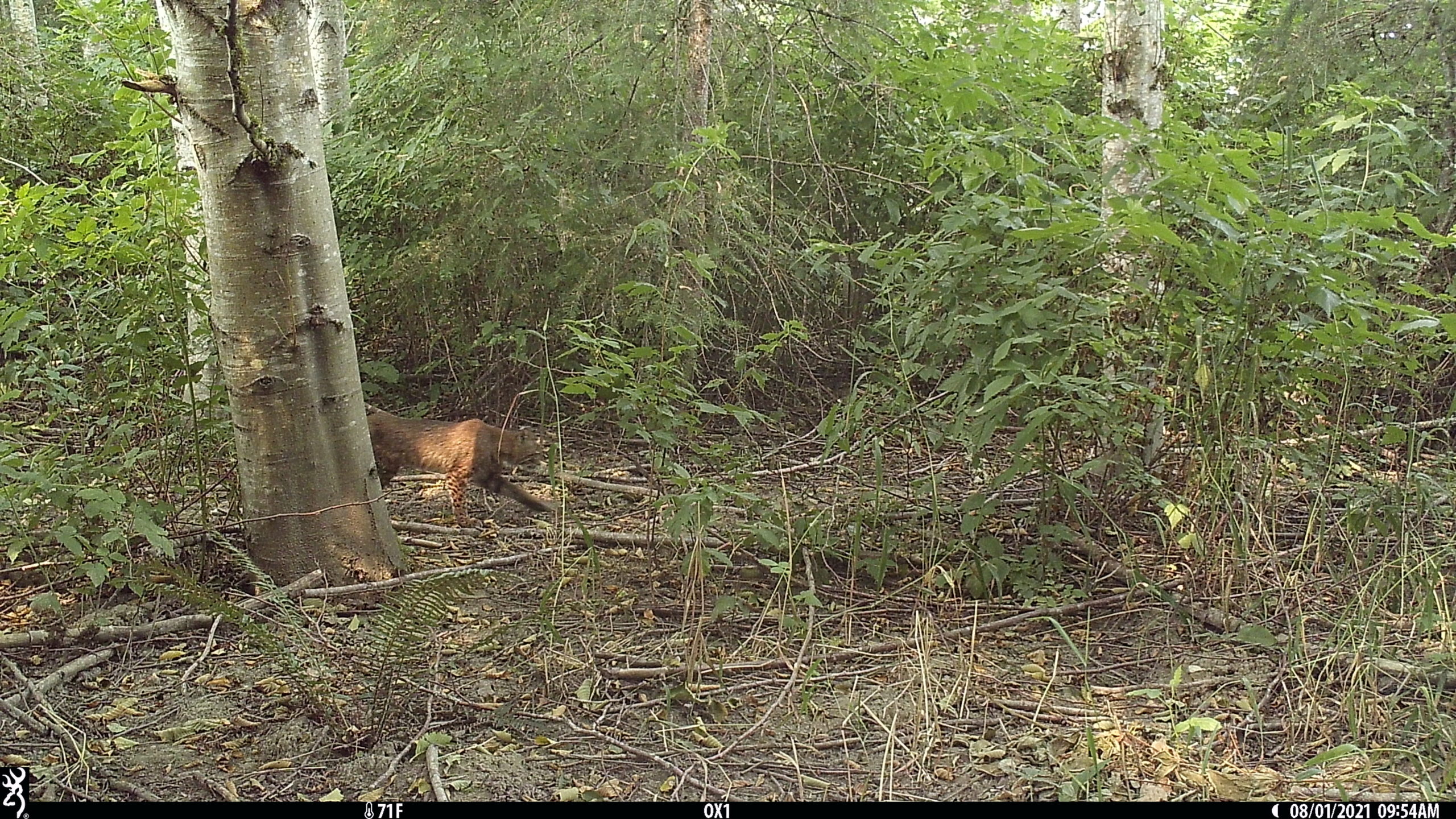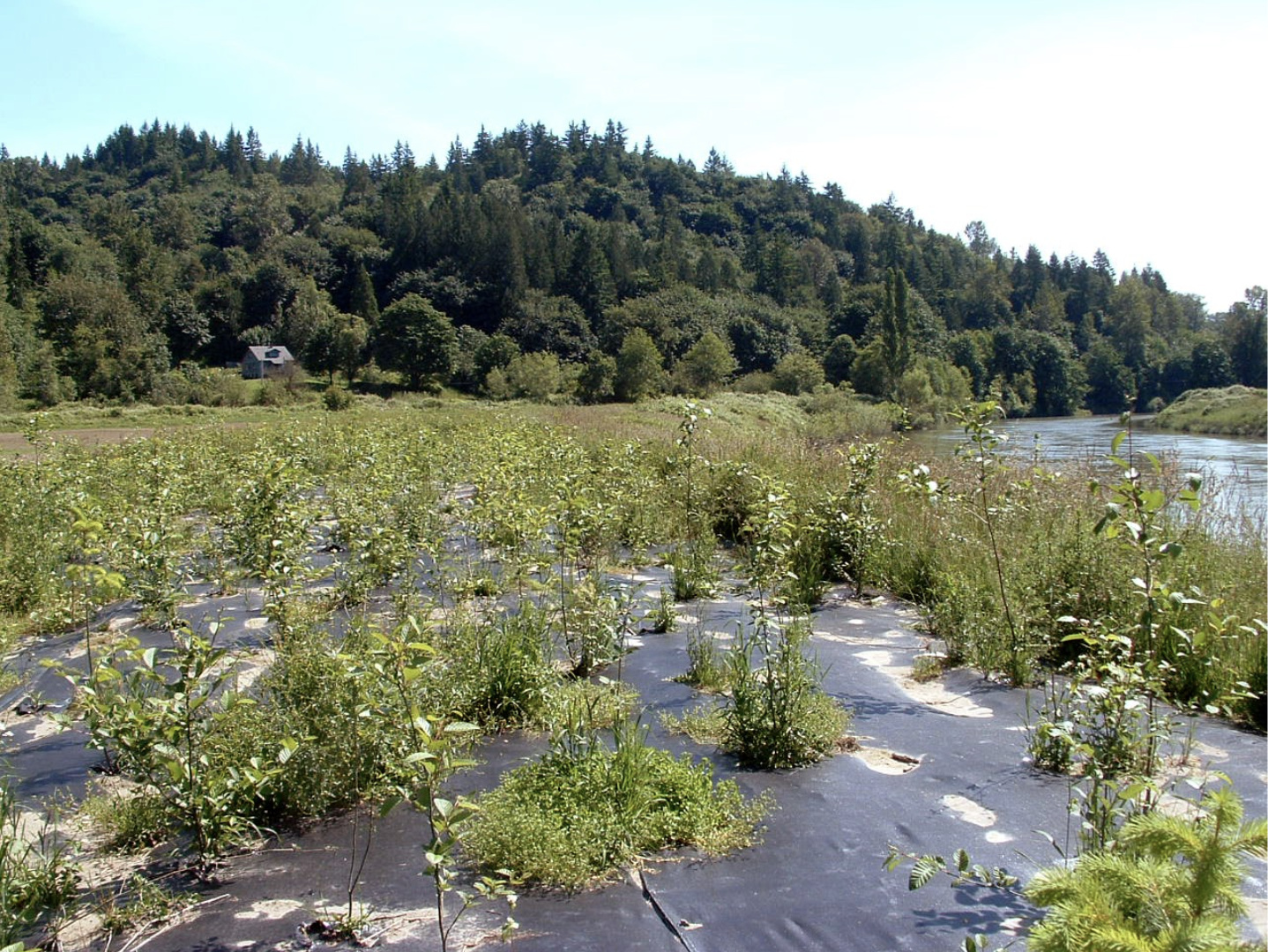Bobcat Sighting Signals a Habitat Restoration Win
One of the questions we’re continuously asking at Oxbow is, “What wildlife lives here?” Oxbow comprises 240 acres of land; it’s impossible for our staff to have eyes on every corner of the terrain, spanning from fields to wetlands to recently replanted forest. Over the past several years, our conservation team has made use of trail cameras to monitor wildlife in some of the restored habitats all around Oxbow, and has been thrilled by sightings of bear, coyote, cougar, and more. But a real triumph of one of our long-running habitat restoration projects was evident earlier this year, with a rare sighting of the elusive and beautiful bobcat in a grove of alder trees along the Snoqualmie River.

Though bobcats are widespread in the region, they are quite reclusive and rarely seen. Native to North America, bobcats (Lynx rufus) are highly adaptable feline predators. About twice the size of the average housecat (with females smaller than males), bobcats can be various shades of gray or brown with darker stripes and spots. They have short, stubby tails and tufted ears with ruffs of hair beneath them. While they prefer wooded areas, they can be found in many different habitats such as wetlands, mountains, and grasslands. Their ability to utilize various habitats is largely due to their diverse diet; while bobcats are obligate carnivores (meaning they don’t eat fruit or plants), they have a wide variety of prey, mainly consisting of rabbits and hares along with other small mammals and birds. They are also known to feed on insects, reptiles, and even deer. Their adaptability allows bobcats to even inhabit the fringes of urban areas. They often live close to agricultural lands so long as brushy or forested areas are nearby, reminding us of the importance of providing such habitat at Oxbow.

The alder grove where the bobcat was spotted wasn’t always an alder grove; prior to 2004, the area consisted of degraded habitat overrun by pasture grasses and brambles of invasive blackberry. In the early days of the organization, Oxbow founder Tom Alberg invited another local environmental organization, Stewardship Partners, to help recreate a riparian (streamside) forest along Oxbow’s river edge. The project initiated one of Stewardship Partner’s earliest buffer plantings in the Snoqualmie River Valley. With some help from Oxbow staff and many community volunteers, the area was planted with native trees and shrubs in 2004 to 2005.

Over the last 17 years, ongoing restoration of the site has continued — and it has paid off. Today, the location is home to a beautiful grove of large, red alder trees with a lush and diverse understory that provides viable habitat for many species of wildlife, including the wily and elusive bobcat.
